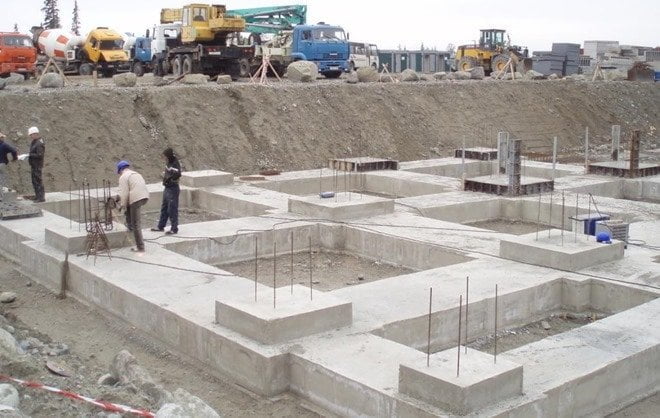Table of Contents
In this article; we will discuss 9 purposes of building foundation.
1. Introduction
Foundation acts as a medium to transfer the load from the superstructure to the underlying ground.

The primary objective of the foundation includes even transfer of the incoming load to the ground so as to impart overall stability to the structure i.e. stronger the foundation, more is the stability of the structure.
2. Purposes of Building Foundation
The main purposes served by the foundation can be explained in brief as follows:
1. Even Distribution of Load
The foundation is the substructure of any civil engineering construction and is subjected to both the dead loads and the live loads coming from the superstructure built on top of it.
The dead load refers to the constant weight of the superstructure itself that does not change whereas the live load refers to the changing weights coming from the superstructure.
Some of the examples of such live loads include the weight of the contents, people, snow, rain, etc. Hence, the foundation of the structure serves as a medium to distribute all such loads evenly and safely to the soil underneath.
The foundation must be rigid and strong enough to distribute the incoming load to the ground without being seriously compromised.
The foundation is responsible even for the distribution of the uneven loads evenly to the ground.
For example, in a building structure, there may be two columns carrying unequal loads. In such a case, a combined footing is used which is capable of transmitting the uneven load to the subsoil evenly.
Hence, by means of such combined footing, the unequal or the differential settlement can be reduced greatly.
2. Reduction of Load Intensity
When the area increases the pressure decreases. Similarly, the foundation serves the purpose of transferring the loads coming from the superstructure to a larger area below such that the intensity of the incoming load is greatly minimized at its base.
Thus, the foundation ensures that the total imposed load does not exceed the safe bearing capacity of the sub-soil below.
3. Protection against Varied Natural Force
The foundation acts as an anchor against the different types of natural forces that may be exerted on the structure as a whole.
Once a structure is constructed, it usually acts as a box and tends to hold its components together. Hence, the foundation serves the purpose of providing the necessary anchorage to the structure.
If the anchorage is not provided properly it may lead to structural damage during natural calamities such as earthquakes, tornadoes, hurricanes, floods and tsunamis.
The foundations are built with solid dense materials such as concrete or stone so that they can resist all such natural forces thereby preventing the collapse of the structure on top of it.
It is a common practice, to build the foundation along with the seismic retrofit bolts so as to prevent the collapse of buildings in the event of earthquakes, hurricanes, and floods.
4. Protection against Ingress of Moisture
Foundation is the component of the structure that acts as a barrier to the ingress of moisture in the structure.
Frost heave is a common problem in the structures that may cause the warping of the structures.
The foundation thus prevents such warping of the building by checking the entry of the moisture into the structure.
Most commonly, a box foundation with a concrete slab is used to prevent the entry of water into the basements.
5. Provision of Level Surface
The foundation ensures that a hard levelled surface is provided over which the superstructure can be built easily and evenly.
6. Lateral Stability
Another important purpose of the foundation is to provide lateral stability to the structure.
The foundation anchors the superstructure above it to the ground underneath thereby delivering lateral stability to the structure as a whole.
The foundation thus increases the stability of the structure against sliding, overturning, etc due to the various lateral forces.
7. Protection against Undermining
Undermining of the structure basically refers to the deterioration or weakening of the structure due to flood water, burrowing animals, etc.
The foundation of the structure also provides structural safety against the undermining of the structure.
The foundation also protects the structure from scouring issues.
8. Protection against Soil Movements
One of the important purposes of the building foundation is to prevent or resist the movement of soil.
The foundation also helps to minimize the formation of cracks and distress in the superstructure above it due to the alternate expansion and contraction of the subsoil as a result of the movement of moisture in some soils.
9. Passive Thermal Control
Foundations also serve as a means of passive thermal climate control for the structures.
Usually, the soil layers beneath the foundations have a moderate temperature that does not change significantly during the summer and winter seasons.
As the foundations are mostly massive in structure and act as a thermal battery thereby moderating the temperature of the entire superstructure built on it.
Due to this reason, massive foundations are constructed in most of the hot arid regions of the Middle East.
This is a common practice adopted even in the basement and cellars construction in the urban areas.
| Read More: Settlement in Foundation |
| Read More: Ranging in Surveying |

